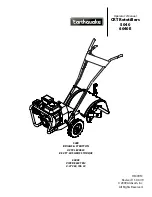
22
present and can never be eliminated. This is why a direct voltage is used for insulation
resistance measurement, the leakage current in this case quickly falling to zero so that it
has no effect on the measurement. A high voltage is used because this will often break
down poor insulation and cause flashover due to surface leakage (see 8.1.4), thus showing
up potential faults which would not be present at lower levels.
The insulation tester measures the applied voltage level and the leakage current through
the insulation. These values are internally calculated to give the insulation resistance using
the expression:-
As the capacitance of the system charges up, so the charging current falls to zero and a
steady insulation resistance reading indicates that the capacitance of the system is fully
charged. The system is charged to the full test voltage, and will be dangerous if left with this
charge. The KEW6016 provides an automatic path for discharging current as soon as the
test button is released to ensure that the circuit under test is safely discharged.
If the wiring system is wet and/or dirty, the surface leakage component of the leakage current
will be high, resulting in low insulation resistance reading. In the case of a very large
electrical installation, all the individual circuit insulation resistances are effectively in parallel
and the overall resistance reading will be low. The greater the number of circuits connected
in parallel the lower will be the overall insulation resistance.
8.2 Damage to Voltage-Sensitive Equipment
An increasing number of electronic-based items of equipment are being connected to
electrical installations. The solid state circuits in such equipment are likely to be damaged by
the application of the levels of voltage used to test insulation resistance. To prevent such
damage, it is important that voltage-sensitive equipment is disconnected from the installation
before the test is carried out and reconnected again immediately afterwards. The devices
which may need to be disconnected before the test include:-
● Electronic fluorescent starter switches
● Passive infra-red detectors (PIRs)
● Dimmer switches
● Touch switches
● Delay timers
● Power controllers
● Emergency lighting units
● Electronic RCDs
● Computers and printers
● Electronic point-of-sale terminals (cash registers)
















































